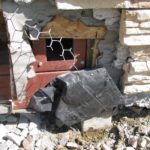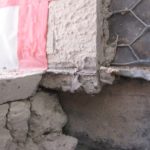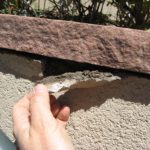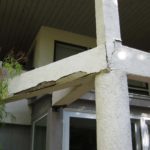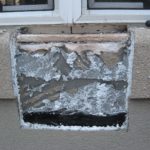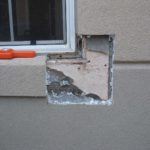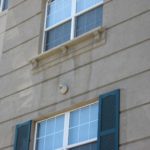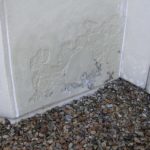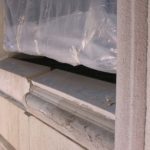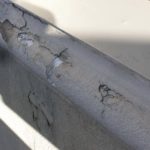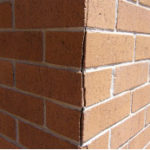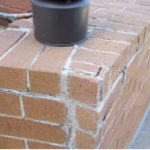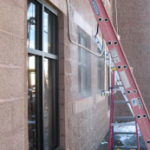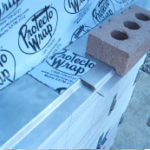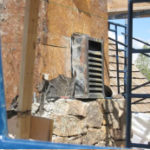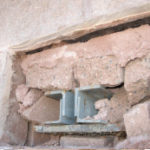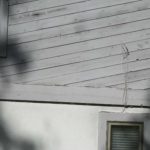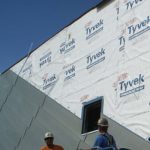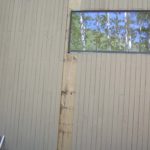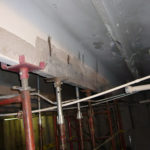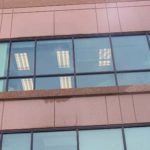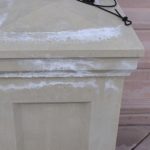Cementitious Stucco and Thin Stone Veneer
Cementitious stucco systems, whether traditional three-coat systems or proprietary one-coat systems, are popular claddings for both residential and commercial buildings. These systems are constructed with a variety of materials, mixes, and assemblies, and rely on quality installation practices and skill. Design elements of the building façade and the common practice of interfacing cementitious stucco systems with other cladding materials can make these installations relatively complex and prone to problems such as cracking, staining, and premature deterioration.
Natural and synthetic thin stone adhered veneers are similar to cementitious stucco systems, in that the thin stone is usually adhered to a cementitious base coat system. They can exhibit problems such as cracking, staining, debonding of the stone, and premature deterioration of the base coat and thin stone.
Through numerous evaluations, BC&E’s personnel have developed expertise in evaluating problems with cementitious stucco systems and thin stone veneers, and designing repairs to address such problems. BC&E personnel often work closely with plastering subcontractors in effecting such repairs, and observing the repair work. BC&E also offers consulting services to architects during the design phase for both new construction and repairs to facilitate proper detailing of cementitious stucco systems and thin stone veneers.
Exterior Insulation and Finish Systems (EIFS)
Exterior insulation and finish systems, or EIFS, initially consisted of rigid insulation adhered to exterior wall sheathing and covered with a thin, reinforced lamina, providing the appearance of plaster, and were commonly referred to as “synthetic stucco.” In the 1990’s, damage associated with moisture behind EIFS installations was widely-reported. As a result, manufacturers developed water-managed or “drainable” EIFS, which have gained popularity in some applications. Although, the use of EIFS was unpopular for a time, the use of continuous insulation to improve energy-efficiency in exterior walls, made EIFS more attractive to building owners and developers.
BC&E personnel have first-hand experience in evaluating some of the earlier EIFS installations in Colorado, and have designed repairs to extend their serviceable life. In addition, BC&E personnel have evaluated numerous EIFS installations on newer buildings which have experienced problems with staining, premature deterioration, physical damage, and water leakage, particularly interfaces with windows, doors, balconies, and other elements of the façade. BC&E personnel often work closely with plastering subcontractors during the repair work.
Masonry
Masonry construction is one of the oldest building technologies. Modern masonry veneer wall systems are by far the most common; however, single-wythe and multi-wythe wall structures are sometimes utilized. Masonry materials consist of brick, concrete block, and stone, although precast concrete elements are also frequently used in lieu of stone features. Design elements of the building façade can provide visual interest; proper detailing is critical to reduce the risk of efflorescence, staining, cracking, and premature deterioration. This detailing is even more important if continuous insulation is used within the drainage cavity, particularly at window and door openings where potential problems with water leakage and heat transfer are amplified.
While BC&E personnel have experience in evaluating the condition of and designing appropriate repairs for historic and older stone and brick masonry structures, many newer buildings with masonry facades exhibit problems with cracking, staining, water leakage, and premature deterioration, which can be evaluated and repaired utilizing BC&E’s expertise. BC&E also provides consulting services related to the design and construction of masonry systems for new buildings, to reduce the risk of potential future problems.
Wood, Metal, and Vinyl Cladding Systems
Many buildings have cladding systems that consist of wood or wood-based siding, fiber-cement siding, metal panels, or vinyl siding, among other cladding systems. Each of these materials have unique characteristics that affect the long-term performance of the cladding system, and necessitate detailing of a variety of conditions.
BC&E’s personnel have a wide range of experience in evaluating problems with various cladding systems, and have designed repairs and renovation projects for building cladding systems. BC&E also offers consulting services to architects during the design phase for both new construction and repairs to facilitate proper detailing of assorted cladding systems
Concrete
Cast-in-place concrete and precast concrete cladding systems are used primarily in commercial and industrial applications, and some unique residential applications. These elements can be vulnerable to staining, cracking, spalling, and premature deterioration. Depending on the details of the interface with windows and doors, water leakage can also be a problem. In certain circumstances, water leakage through cracks in concrete panels can occur.
The broad experience of BC&E’s personnel with concrete and concrete structures allow for unique insight and knowledge in evaluating the condition of and designing appropriate repairs for cast-in-place and precast concrete cladding systems. BC&E also provides consulting services related to the design and construction of cast-in-place and precast concrete cladding systems on new buildings, to reduce the risk of potential future problems.
Paint Coatings and Sealants
Paint and other high-performance coatings are used not only to increase the aesthetic appearance of a building, but also to protect and enhance the performance of the cladding system to which they are applied. On existing buildings, the cladding system is usually evaluated so that appropriate paint or coating materials, preparation, and installation methods can be determined.
Sealants are most often used at joints, transitions between cladding systems and windows and doors, and at penetrations through walls, to reduce the risk of water penetration at these locations. Joint profiles, movement expectations, exposure conditions, building aesthetics, and substrate materials and conditions all play a role in the design and selection of sealant joint materials and systems.
During the evaluation of numerous cladding systems, BC&E’s personnel have developed experience in the evaluation and design of a wide-variety of paint, coating, and sealant materials, systems, and details. BC&E’s capabilities include on-site evaluation of paint, coating, and sealant materials to evaluate their performance in existing applications.
Download a PDF of this page

